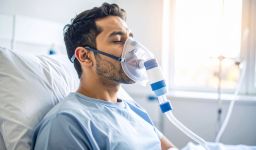
Suctioning for Healthcare Workers - NEW
Cost: £10.00
Welcome to our Suctioning for Healthcare Workers Online Training Module. Upon completion, you will receive a certificate of completion. The course duration is approximately 1 hour and will earn you 1 CPD point. You have 6 months from the date of purchase to finish this training.Suctioning for Healthcare Workers
Course Duration: 1 Hour
1. Introduction
• Suctioning is a clinical procedure used to maintain a patient’s airway by removing secretions such as mucus, blood, or vomit.
• It is performed in community and hospital settings and may be life-saving.
• This module will cover the indications, risks, and safe technique of suctioning.
2. Anatomy and Physiology Refresher
• The respiratory tract is lined with cilia and mucus to trap and move secretions.
• In some patients, this natural clearance mechanism is impaired (e.g., reduced consciousness, neuromuscular conditions, tracheostomy).
• Suctioning is used to support airway clearance when the patient cannot do so independently.
3. Indications for Suctioning
• Audible secretions or gurgling in the airway.
• Visible secretions in the mouth, pharynx, or tracheostomy tube.
• Increased work of breathing or desaturation.
• Inability to clear secretions through coughing.
4. Contraindications and Risks
Contraindications (relative, not absolute):
• Recent oesophageal or facial surgery.
• Head trauma with suspected basal skull fracture (for nasopharyngeal suction).
• Risks/complications:
5. Infection Prevention and Control
• Perform hand hygiene before and after the procedure.
• Use appropriate PPE (gloves, apron, mask, goggles/visor).
• Use sterile technique for invasive suction (e.g., tracheal suction).
• Dispose of suction catheters as single-use items.
6. Equipment Required
• Suction machine (checked and functioning).
• Appropriate suction catheter (size based on patient’s airway).
• Sterile water/saline (if required for flushing).
• Oxygen supply (if needed).
• PPE and waste disposal facilities.
7. Suctioning Techniques
• Oropharyngeal Suction
• Nasopharyngeal Suction
• Tracheal Suction (including tracheostomy tube)
8. Monitoring and Aftercare
• Monitor oxygen saturation, respiratory rate, and heart rate before, during, and after suctioning.
• Observe for distress, coughing, or cyanosis.
• Document the procedure, including effectiveness and any adverse events.
• Provide reassurance to the patient and ensure comfort.
9. Complications and Escalation
• If the patient deteriorates (hypoxia, bradycardia, bleeding), stop suctioning and escalate to senior staff.
• Know local escalation policies (e.g., crash call/2222 in hospitals).
Learning outcomes:
1. Describe the purpose of suctioning.
2. Identify indications and contraindications.
3. Understand infection prevention and control measures.
4. Perform suctioning safely and effectively.
5. Recognise potential complications and when to escalate.
We hope you find this module informative and beneficial for your professional development in Suctioning for Healthcare Workers.
If you need more information about this course, please contact Train Healthcare directly at 0208 3266 704 or email contact@trainhealthcare.com.
Please note that refunds are not available for online training purchases.
Nursing and Midwife Council's (CPD Points).
Requirements:
It is necessary to complete 35 hours (35 Nursing CPD Points) of relevant CPD within the three-year period since your last registration renewal or since joining the register.
Of these 35 hours (35 Nursing CPD Points), a minimum of 20 hours (20 Nursing CPD Points), should be dedicated to participatory learning, which involves engaging in activities that facilitate interaction with other professionals.

